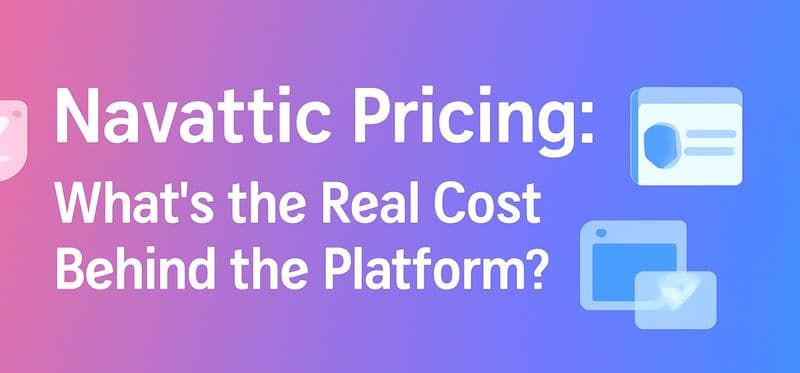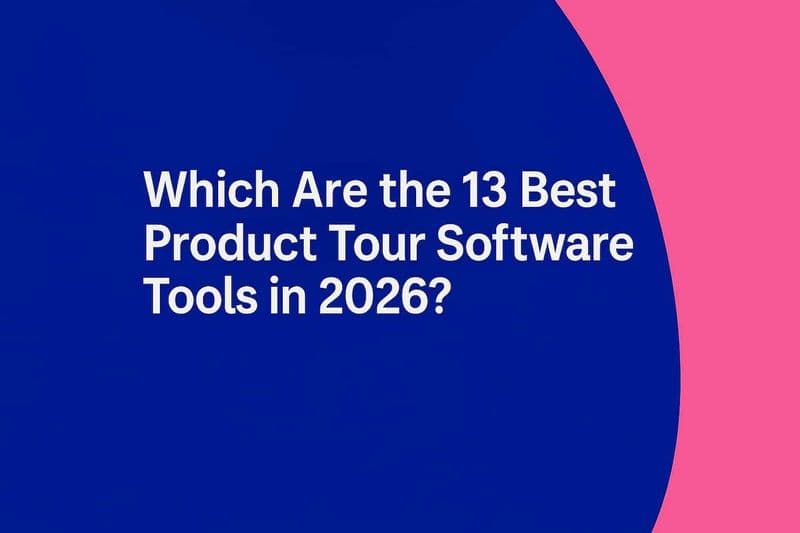
Many SaaS businesses struggle with pricing models that don't fit their customers' needs. Flat-rate plans often lead to users paying for rarely used features, causing frustration and lost customers. As customer expectations evolve, they want more flexible and transparent pricing that reflects cost structures and usage. This shift, therefore, requires careful consideration and creates challenges for companies still relying on rigid pricing structures.
Usage-based pricing offers a solution by charging customers only for what they use. This guide will help you choose the right pricing model for usage-based services to stay competitive and better meet customer needs.
What Is Usage-Based Pricing in SaaS?
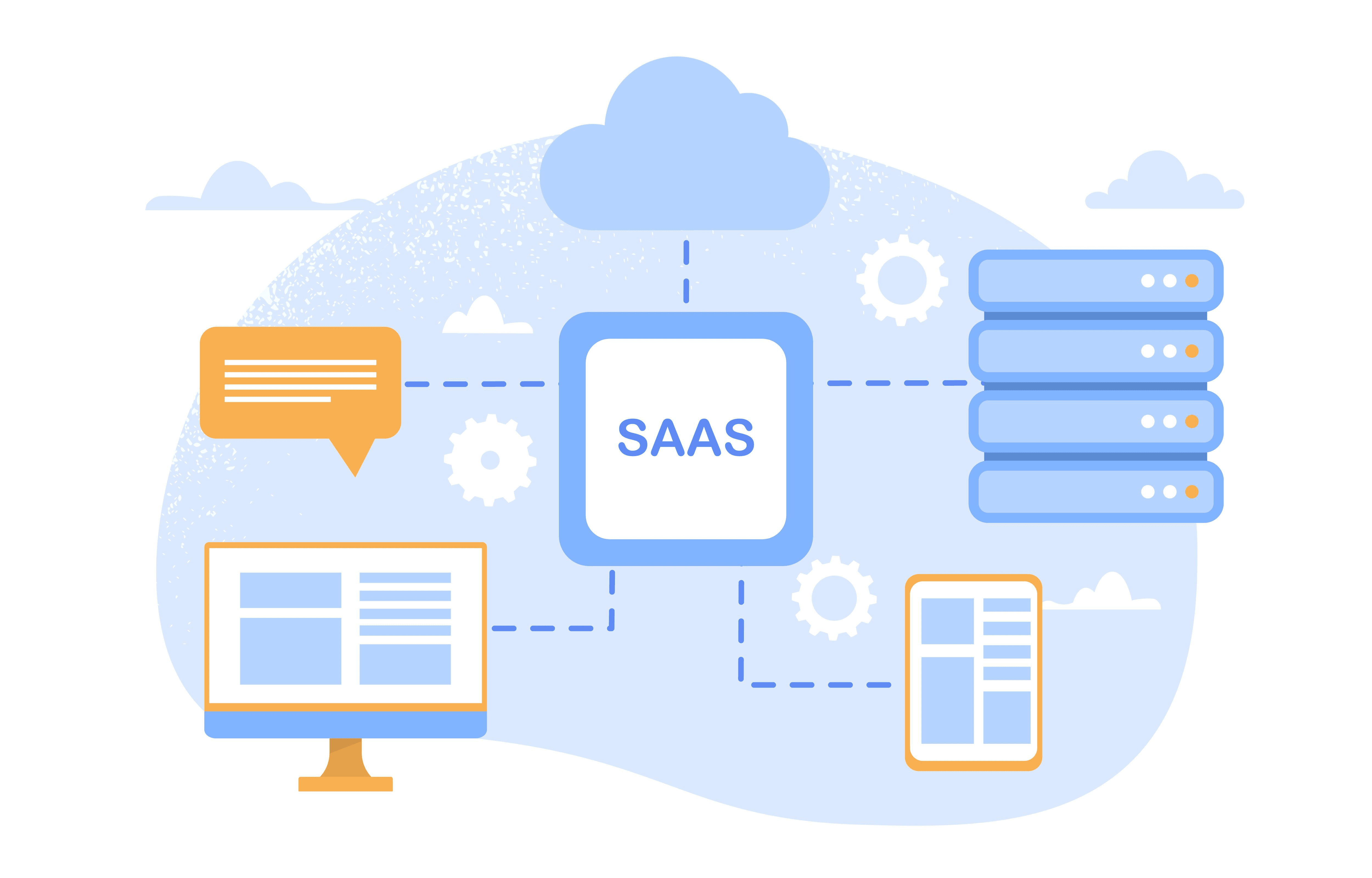
Usage-based pricing is changing how we run SaaS businesses. Instead of locking customers into fixed plans, we charge based on actual usage of the service, giving them more control and value. We've seen firsthand how this shift increases customer satisfaction and helps companies scale faster. As more buyers demand flexibility, this model lets us meet their needs while boosting revenue. It's a more innovative, sustainable way to grow in today's market.
What is Usage-Based Pricing?
Usage-based pricing charges customers based on their usage of a product or service, unlike fixed subscription models. This flexible approach, known as a hybrid model, allows users to pay only for the value they receive, making it accessible to more people and accommodating a larger number of users. It encourages new customers with lower initial costs, enabling them to start small and scale up as needed.
For example, cloud providers like AWS charge for data storage and cloud storage computational work based on actual usage, fostering fairness in billing and strengthening customer relationships. This customer-centric model supports growth by ensuring each user pays for what suits their needs.
Why is it Popular Among SaaS Businesses?
Usage-based pricing is gaining traction among software companies and SaaS companies because it is adaptable, scalable, and promotes automation. It aligns with customer needs, simplifies upsells, and enhances satisfaction by linking costs to usage, promoting transparency and flexibility. This model attracts a broader customer base, as customers pay only for what they use, which builds trust and fosters long-term relationships.
This model also boosts net revenue retention, a vital metric for SaaS firms. Companies like Datadog and Confluence demonstrate improved annual revenue growth with this strategy. Ultimately, it effectively meets customer demands and benefits both parties.
What Are the 3 Key Benefits of Usage-Based Pricing Models?
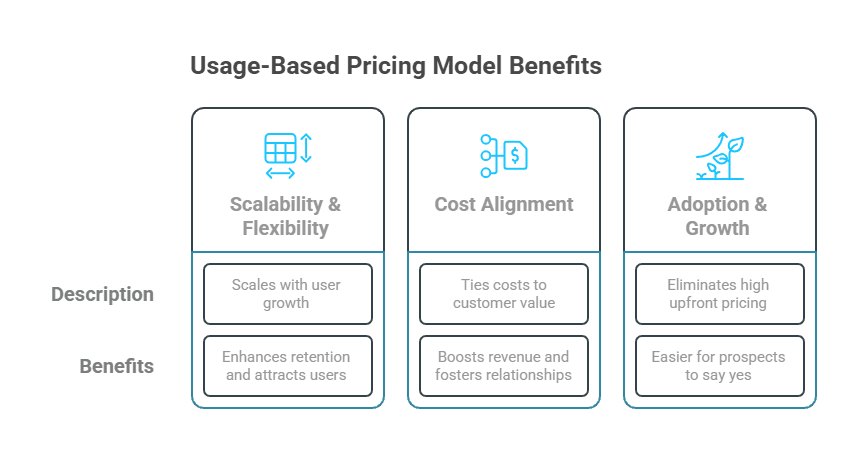
Picture a growing startup hesitant to invest in expensive software. Usage-based pricing, aided by AI, removes that fear by letting them pay only for what they use. It's flexible, scalable, and customer-friendly, making it a smart strategy for modern SaaS growth.
1. Scalability and Flexibility for Customers
Usage-based pricing is ideal for SaaS companies, scaling with user growth and catering to the diverse expectations of their individual users. It benefits both startups and large enterprises by eliminating hefty fixed costs. Customers only pay for what they use, promoting fairness and trust. This flexibility enhances retention and attracts new users, making it a preferred model for scalable products like cloud platforms.
2. Aligning Cost with Customer Value
Usage-based pricing directly ties costs to value, allowing customers to pay for what they use, like storage, application programming interface (API) calls, or account numbers. This approach feels fair, builds trust, and facilitates smooth upselling as usage grows. It helps SaaS companies boost revenue and foster long-lasting customer relationships.
3. Lower Barriers for Adoption and Faster Growth
One of the biggest hurdles for new customers is high upfront pricing. Usage-based models eliminate that fear. This makes it easier for prospects to say yes, test the product, and scale gradually. It's a low-risk way to get started—and often leads to higher conversion and stronger lifetime value over time.
Turn Usage into Revenue with SmartCue
Empower your pricing strategy with real-time product analytics, flexible demo creation, and seamless CRM integration.
No code, no guesswork—just better pricing decisions.
Try SmartCue Today — 14-Day Free Trial
What are the 2 Ways to Prepare Your Business for Usage-Based Pricing?
Imagine your SaaS product gaining traction, but your pricing doesn't reflect how customers use it. That's a missed opportunity. Shifting to usage-based pricing takes more than a tweak—it needs the right tools, planning, and customer insights to succeed.
1. Essential Tools and Resources Needed
To set up usage-based pricing smoothly, start with powerful analytics like SmartCue to track real-time usage and understand customer behavior. Combine this with automated billing, CRM, event tracking, and engagement tools to keep pricing accurate and scalable.
SmartCue integrates seamlessly with platforms like Salesforce, HubSpot, Stripe, and Mixpanel—bringing all these essential tools into one place.
2. Understanding Your Customer's Usage Patterns
Want to build pricing that actually clicks with your customers? Start by understanding how they use your product and identifying key usage metrics. When do they log in? What features do they love? How much data do they really use? These insights aren’t just nice to have—they’re the foundation for creating smart, usage-based pricing that feels fair and delivers real value. With clear value metrics tied to actual behaviour, you can price with confidence, reduce churn, and keep customers happy—because your pricing finally makes sense to them.
Step-by-Step Action Plan to Successfully Implement Usage-Based Pricing
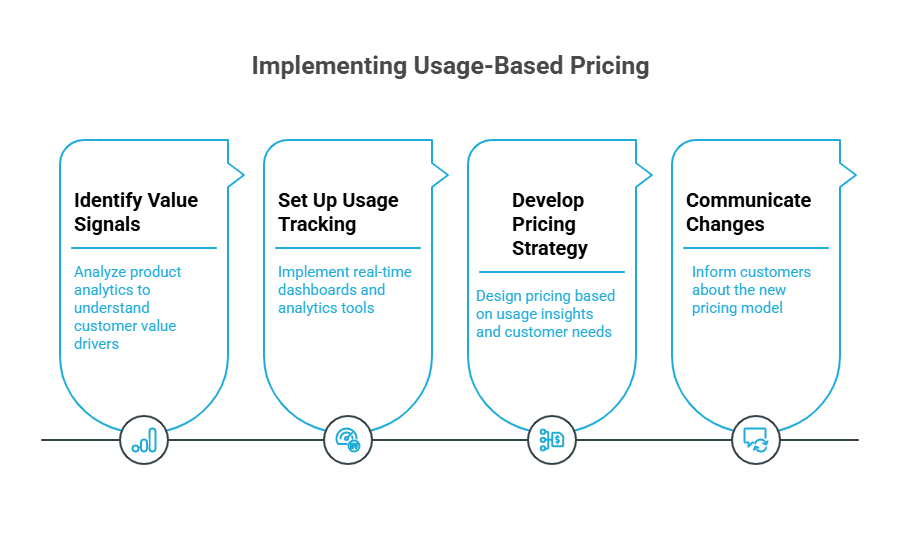
When you know how customers actually use your product, you unlock the secret to pricing that feels fair, flexible, and built around real value. That’s why so many modern SaaS companies are shifting to usage-based pricing—it drives trust, loyalty, and long-term growth.
Here’s how to make the switch, step by step:
Step 1: Pinpoint Where Customers See Value
Before you change your pricing, you need to know what really matters to your users.
Start by digging into product analytics:
How often do they log in?
Which features keep them coming back?
How much data are they storing or sharing?
These value signals help you build pricing around what customers actually care about. Done right, you’ll not only align price with value—you’ll also boost satisfaction, improve net revenue retention, and create a business model that grows as your customers do.
Step 2: Build a Solid Usage Tracking Setup
You can’t charge based on usage if you’re not tracking it accurately.
Set up real-time dashboards and analytics tools to monitor user activity—from feature usage to storage limits and everything in between. With APIs, you can integrate tracking across tools and get a full picture of how users interact with your platform.
This isn’t just about pricing—it’s about spotting churn risks, uncovering upsell opportunities, and making better product decisions.
Step 3: Let Data Drive Your Pricing Strategy
Here’s where it all comes together.
With usage insights in hand, you can design pricing that reflects real user behaviour—scaling up as customers grow. You’re no longer guessing. You’re aligning pricing with usage patterns, value delivered, and customer needs.
Finance teams can even automate updates, so pricing adapts as usage changes. That means fewer bottlenecks and better customer alignment across the board.
Step 4: Communicate the Change Like a Pro
Switching to usage-based pricing? Don’t just drop the update—guide your customers through it.
Be clear, proactive, and transparent.
Send targeted emails
Host Q&A webinars
Build a solid FAQ section
Make sure customers understand the why behind the change and how it benefits them—like more control, better flexibility, and fairer billing. When you lead with honesty and clarity, you build trust—and happy customers stick around..
2 Key Challenges and How to Overcome Them in Usage-Based Pricing
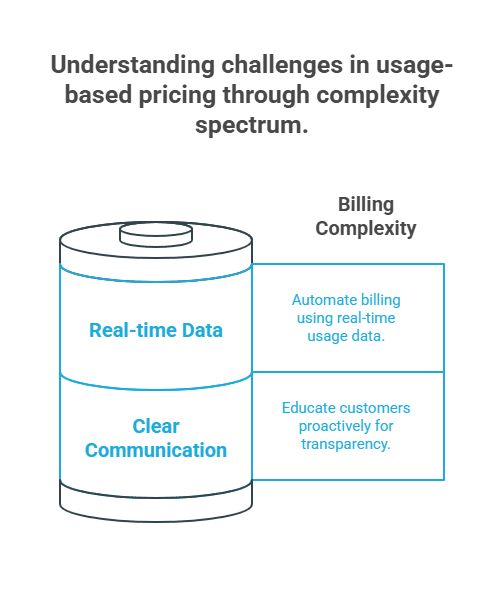
Before tackling the challenges of usage-based pricing, prioritize clear communication and robust systems to drive customer adoption. Customers feel valued when they grasp the pricing structure and experience transparent billing. Effective usage tracking and straightforward billing methods ensure a smoother transition and increased customer satisfaction.
1. Tackling Billing Complexity the Smart Way
Usage-based pricing brings incredible flexibility—but it also adds complexity to billing. The key to managing it? Real-time usage data.
By tracking key metrics like API calls, storage, or user activity, you can ensure customers are only paying for what they actually use. No surprises. No guesswork.
Automating your billing process—especially invoicing—cuts down on manual errors, speeds things up, and gives your customers the transparency they expect. Combine that with strong analytics and open communication, and you’ve got a finance system that supports steady MRR, smoother cash flow, and happier customers.
Smart billing = better trust and better business.
2. Setting Clear Expectations & Educating Your Customers
Switching to usage-based pricing only works if your customers get it. That means education and communication are non-negotiable.
Help them understand the link between their usage and their bill. Use in-app analytics, dashboards, and regular updates to keep them in the loop on how much they’re using and what it costs. Proactive education—via webinars, onboarding content, or FAQ hubs—makes the shift feel empowering, not confusing.
The more visibility they have, the more value they’ll see. And when you pair that with regular check-ins and a genuine willingness to adapt pricing to evolving needs, you show customers that you’re in it for the long haul—with them.
Real-Time Data = Smarter Billing
SmartCue integrates with Stripe, HubSpot, Salesforce, and more—so your billing, tracking, and pricing stay in sync.
Simplify operations and reduce billing friction with live usage tracking.
👉 Explore SmartCue Integrations
5 Real-World Examples of Successful Usage-Based Pricing
Several SaaS companies, like Datadog and Confluence, showcase the effectiveness of usage-based pricing, especially on the road to IPO. Analyzing customer usage patterns and aligning pricing can enhance retention and boost revenue, providing a competitive advantage through strategic pricing choices.
1. UserPilot's Hybrid Pricing: Flexible and Usage-Based

UserPilot mixes usage-based pricing with subscription tiers, letting you pay based on how much you use while offering flexibility. This approach fits different customer needs, including a free plan, boosting satisfaction and retention. It helps attract new users by providing fair pricing that adapts as your usage grows or changes.
2. Baremetrics: Clear Pricing Based on Usage
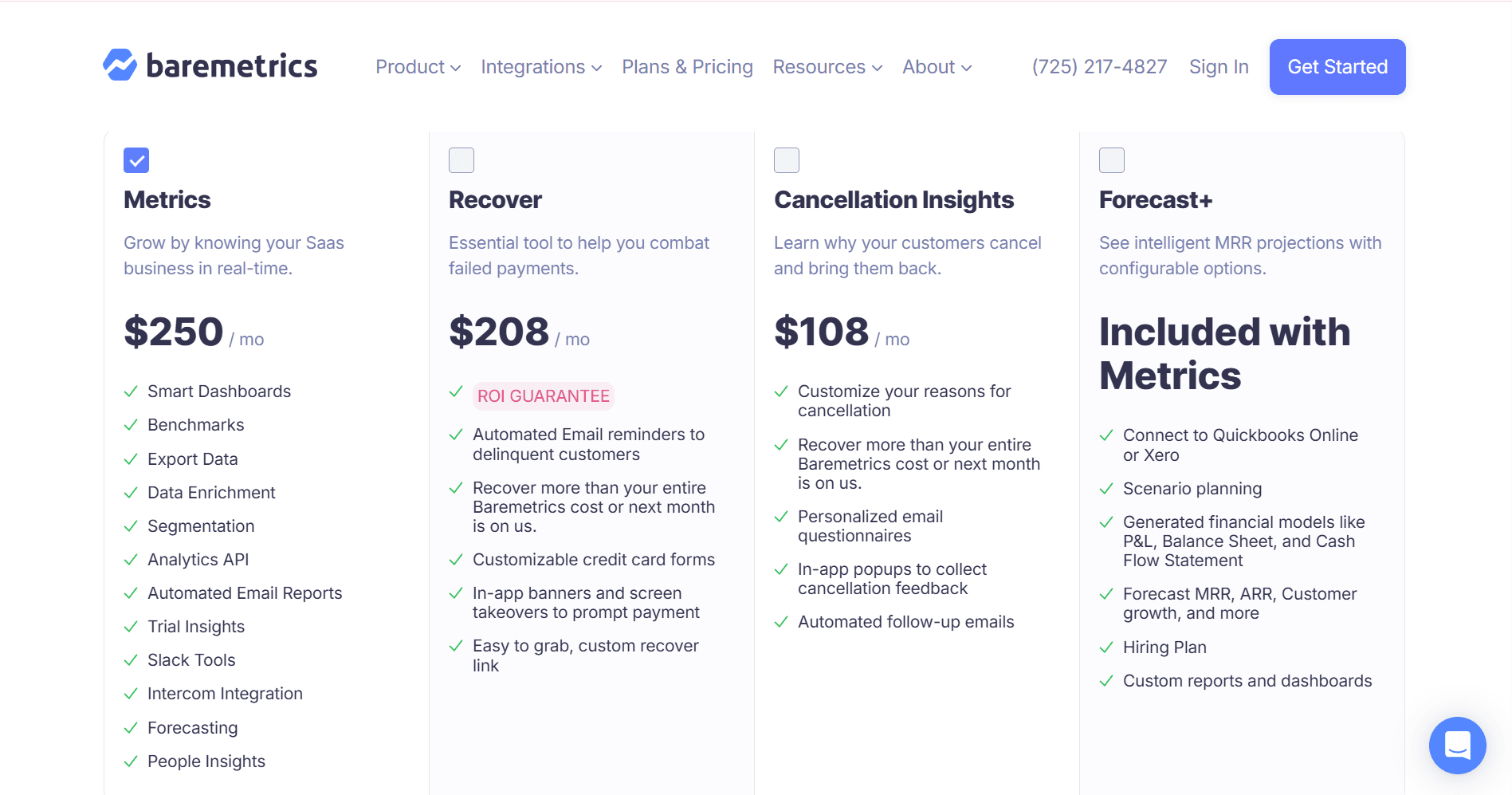
Baremetrics charges customers based on how much they use the product. Their consumption model offers transparency and fairness, supported by real-time analytics. This helps customers understand their costs better, leading to higher satisfaction and stronger loyalty, while allowing Baremetrics to grow revenue through aligned pricing.
3. Datadog: Pay for What You Use
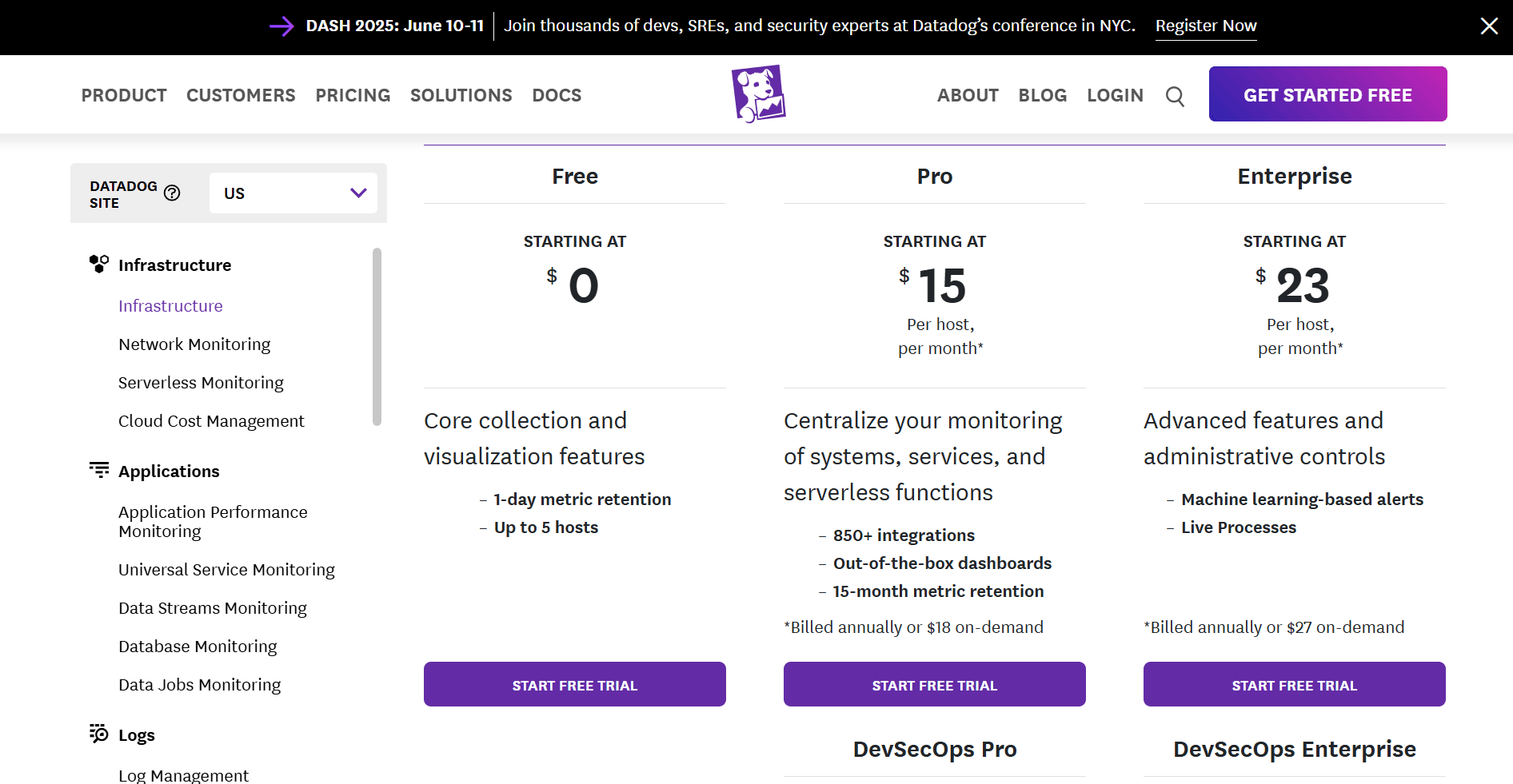
Datadog's pricing is tied directly to resource consumption, so you only pay for what you use. Their analytics tools track usage patterns to provide tailored pricing and solutions. This flexibility boosts customer satisfaction and retention and helps the company maintain steady revenue growth over time.
4. Confluence: Volume-Based Pricing for Growing Teams
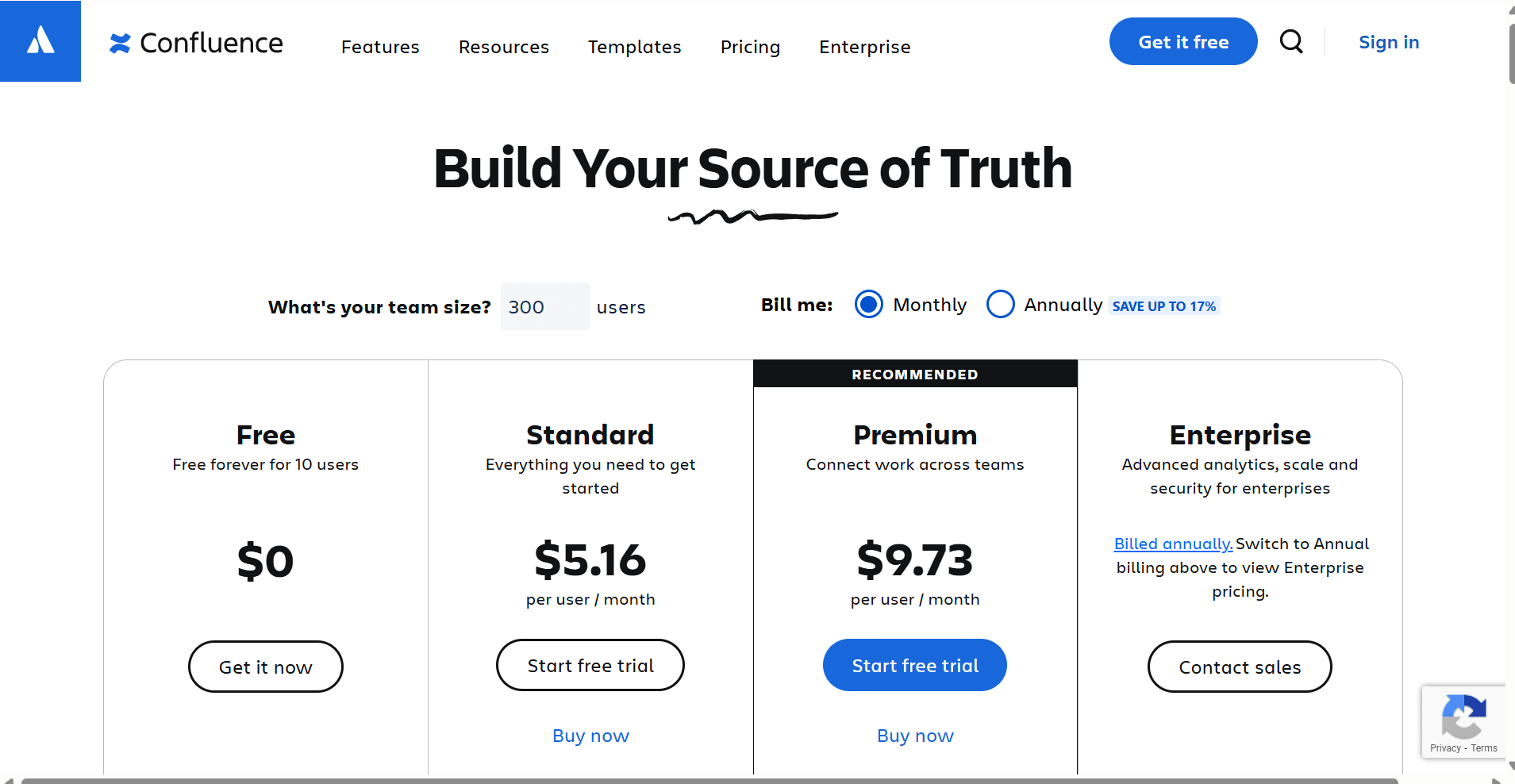
Confluence charges based on active users and data storage, allowing customers to scale plans as their needs change. This volume-based pricing gives flexibility, so businesses pay only for what they use. It improves customer satisfaction and retention, making it ideal for companies of all sizes aiming for steady growth.
5. Amazon EC2: Pre-Payment for Cloud Flexibility
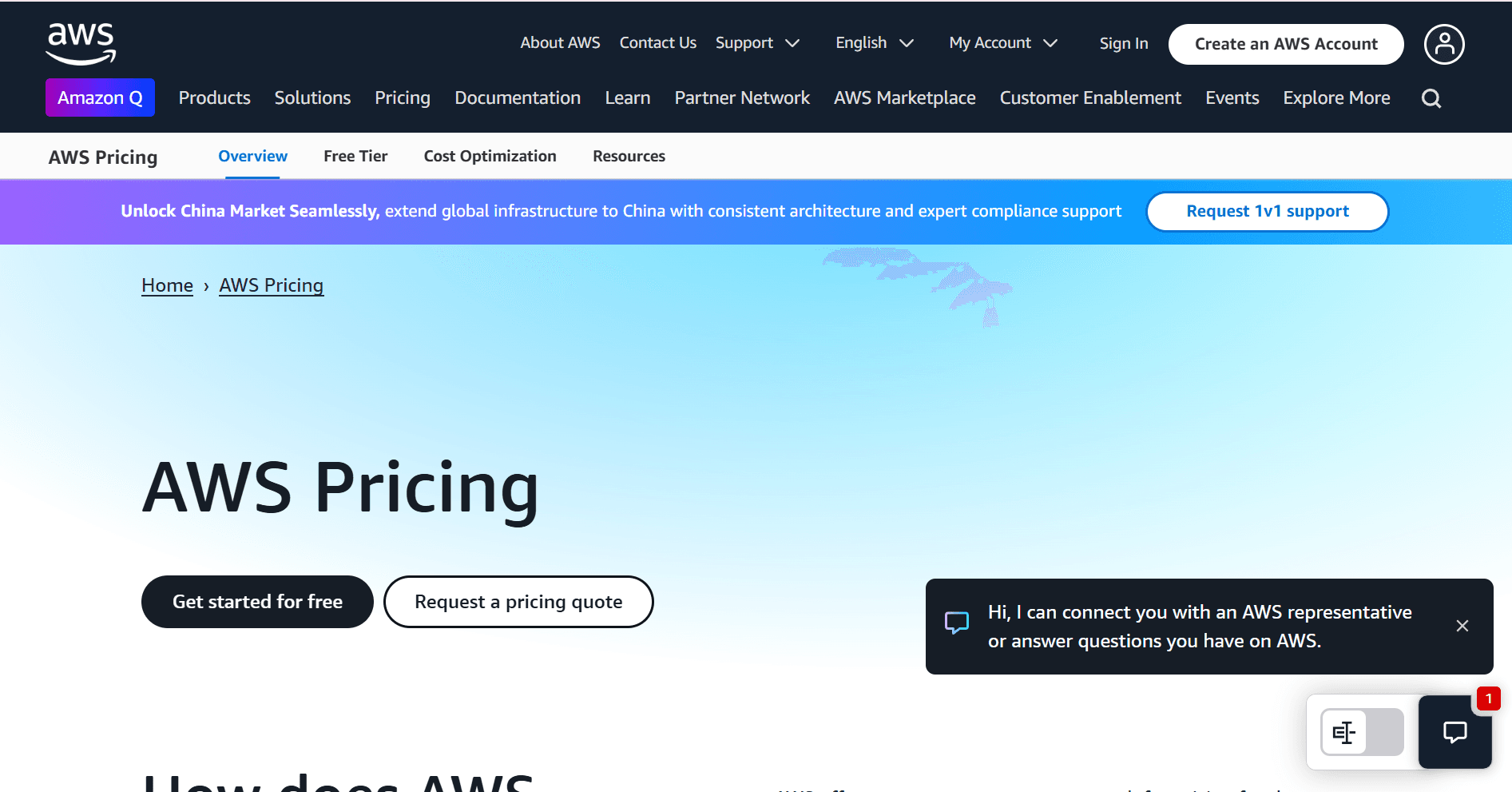
Amazon EC2's pre-payment model lets you estimate and pay upfront for cloud resources, controlling costs while staying flexible. Amazon Web Services (AWS) uses real-time usage data to adjust pricing, ensuring customers get value. This method supports better budgeting, higher satisfaction, and strong customer loyalty in the cloud market.
Build Smarter Pricing with Interactive Walkthroughs
Turn product value into pricing strategy with SmartCue’s interactive demos and usage insights.
Help users understand, adopt, and pay for what they love—at scale.
👉 Launch Your First Usage-Aware Demo
Conclusion
Implementing usage-based pricing boosts customer satisfaction by letting people pay for the value they actually get. It offers flexibility to meet diverse needs and helps SaaS companies improve customer retention and net dollar retention rates, as well as revenue retention. Businesses can tailor their offerings by using analytics to track usage, keeping customers happy and attracting new ones, giving them a competitive edge in a fast-changing software market.
Frequently Asked Questions
How Does Usage-Based Pricing Differ from Subscription Models?
Usage-based pricing in SaaS links costs directly to how much customers use the service—the more they use, the more they pay. This flexible model adjusts costs based on the actual value received, offering greater fairness and greater flexibility. In contrast, traditional subscription pricing charges a fixed fee for access over a set period, regardless of usage. Both models impact customer satisfaction and revenue forecasting for SaaS businesses.
What is usage based pricing for SaaS, and how does it work?
Usage based pricing SaaS is a model where customers are charged based on their actual usage of the service, rather than a flat fee. This approach allows businesses to align costs with value delivered, encouraging scalability and flexibility while enabling clients to pay only for what they consume.
What Are the Risks of Switching to SaaS Usage Based Pricing?
Switching to usage based SaaS pricing can bring some risks. Customers might feel upset if they face unexpected costs, and inconsistent billing could lead to revenue loss. Managing large amounts of usage data can be challenging, too. Without clear communication about the change, confusion and loss of trust may occur, making transparency essential for a smooth transition.
How to Track and Analyze Usage Data Effectively?
To track usage data properly for SaaS usage based pricing, you need strong product usage analytics tools. These tools help you understand how customers interact with your product by monitoring key metrics regularly. Spotting usage patterns allows you to make smarter pricing decisions and continuously improve your SaaS offering based on real customer behavior.

